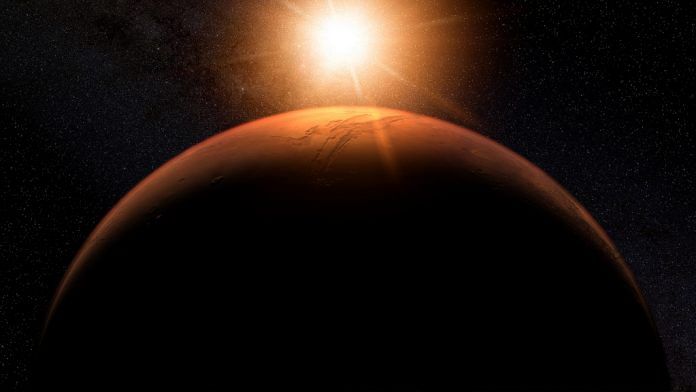More Methane on Mars: microbes or geological?
Methane as a gas does not remain in the atmosphere for very long unless it is constantly being pumped in. Once believed to be impossible, scientists are now increasingly convinced that Mars releases methane into the atmosphere on a regular basis. But the cause for it hasn’t been understood: the only two sources of production are biological processes or geological processes, both thought to be absent on the planet. Last week, we detected methane again on Mars. What does it mean? More on astronomy.com.
Japanese spacecraft shoots a bullet into an asteroid
Japan’s Hayabusa2 spacecraft last week shot a 2 kg copper plate on to the surface of the asteroid Ryugu, around which it has been in orbit for several months, to expose its contents below the surface and study it in detail. The mission is a sample return mission. Hayabusa 2 already picked up samples from the surface of the asteroid to bring back to earth, and it might pick up samples from the exposed parts of the asteroid too. More on space.com.
First private spacecraft enters orbit around the moon
The Beresheet mission, sent to the moon by the Israeli private company SpaceIL, has finally entered into orbit around the moon. This is the world’s first private mission to go to the moon. After settling into its new home to prepare for dispatching a lander on to the lunar surface, the orbiter sent home its first images of the moon. This includes pictures of the far side of the moon with the earth in the background. Pictures and other info on the Jerusalem Post.
Previous instance of current carbon dioxide levels saw trees growing in the south pole
Using fossil record and sedimentology, researchers are uncovering an image of what the earth looked like when carbon dioxide was saturating the planet’s atmosphere at the current levels last time. This was between 2.6 and 5.3 million years ago; trees grew near the south poles, global temperatures were 3 to 4 degrees C warmer, and sea levels were 20m higher than now. The pattern indicates that at our current levels of emission are drastically toxic and require action. More on The Guardian.
Sci-fi bug that kills people in 90 days spreading across the globe
In a global public health crisis, more and more cities across the world are seeing the spread of Candida Auris fungus, a drug-resistant superbug that can kill people in 90 days. So far in the US, there have been more than 587 cases, with a recent outbreak in NYC. Reports have also emerged from the UK and Venezuela. The fungus targets weak immune systems, such as those of babies and elderly people. Details on NYT.



